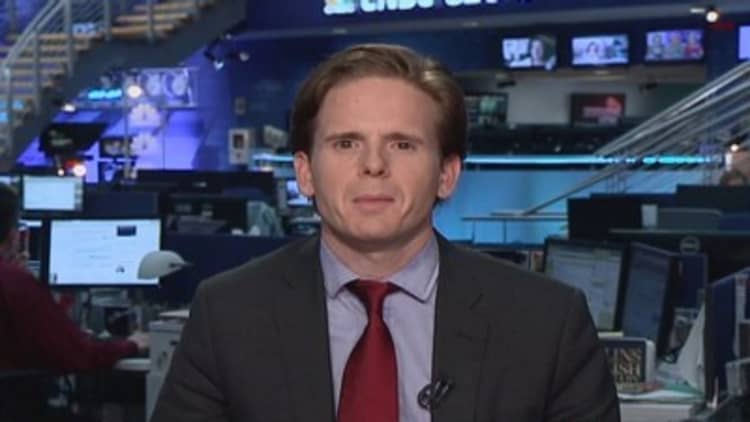
Coca-Cola is putting up a good fight against the decline in U.S. soda consumption. The question investors need to ask is how much the battle will cost.
Shares of the beverage giant rose 3 percent in a weak market Tuesday after the company reported surprising resilience in its North American sparkling drink division. Unit volume fell just 1 percent and pricing rose by 2 percent, indicating a slight increase in revenue. That suggests an improvement from 2013, when sparkling revenue was roughly flat in North America.
The North American soda division has been a soft spot for Coca-Cola in recent quarters after health concerns sparked a falloff in sales of Diet Coke, which declined 6.8 percent by volume in 2013, according to Beverage Digest. The North American sparkling group as a whole accounts for roughly 30 percent of company-wide revenue.
But while investors seemed encouraged by the sales improvement in the first quarter, they should keep a close eye on the company's costs. Coca-Cola said that currency-neutral operating profit fell 8 percent for North America as a whole, which also includes some non-sparkling drinks.
While Coca-Cola blamed part of that decline on a calendar shift, it also reflects high operating expenses. That suggests the company has ramped up marketing spending and may need to continue to invest in more advertisements in coming quarters.
Such a strategy isn't necessarily the wrong move. To the extent Coca-Cola can keep volumes even flat, it can win market share from rivals if the soda category shrinks further. Advertising may also allow Coca-Cola to raise prices, which is a good way to protect the brand.
The trouble is that higher marketing spending could be required for the foreseeable future unless soda-category trends improve. And if rival PepsiCo decides to ramp up spending as well, the battle will get tougher.
Marketing may also be be less effective than in the past if consumers are truly leaving the soda category for health reasons, according to Morgan Stanley analyst Dara Mohsenian. He also points out that carbonated soft drinks didn't slow much faster than other consumer categories in the 2008-2009 downturn, but soda has suffered worse recently.
Read MoreA Monster solution to Coca-Cola's diet problem
The real solution for Coca-Cola is to either find a way to change negative perceptions about soda and artificial sweeteners or develop new products that can offset sales declines. Asked on Tuesday's investor call about the timing of such innovations, Coca-Cola CEO Muhtar Kent said he couldn't reveal any specifics.
That's not to say that Coca-Cola can't eventually find its way. The company's scale gives it a better chance than virtually anyone to come up with new products that will resonate with consumers. But it's very hard to predict how long that will take. The company didn't respond to requests for comment from CNBC Digital.
Coca-Cola trades at an enterprise value, adjusted for net debt, of 13.8 times 2015 consensus earnings before interest, taxes, depreciation, and amortization. Rival PepsiCo, which depends less on U.S. soda sales, trades at just 10.9 times 2015 EBITDA. Investors may be better off waiting for Coca-Cola shares to go back on sale.

